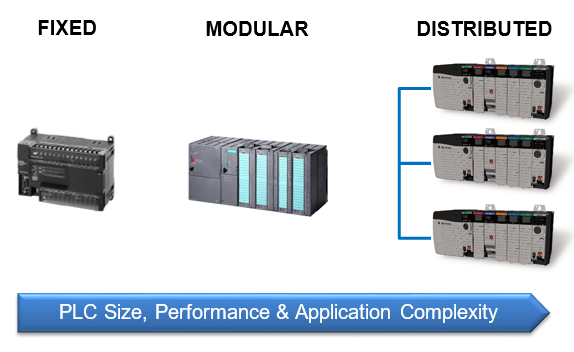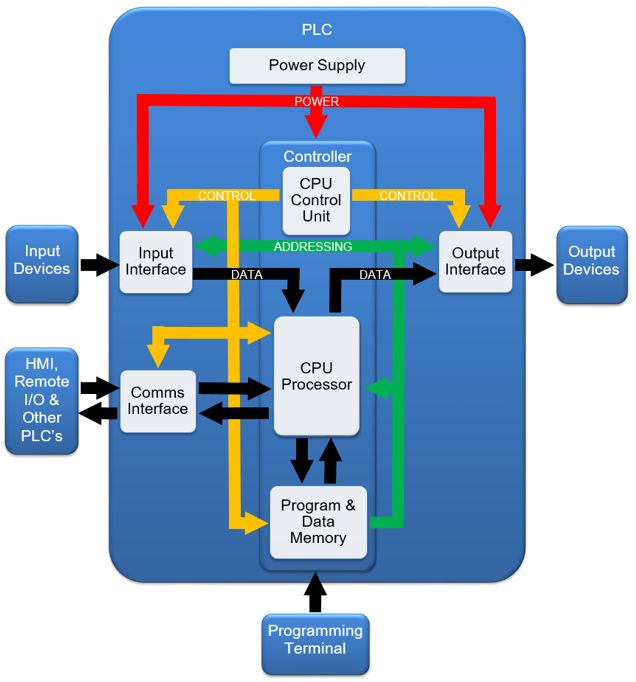Explain the Differences Between Open and Proprietary Plc Architecture
Explain the differences between open and proprietary PLC architecture. Open architecture PLCs are allowed to be connected to other systems and communicate with a.

Programming Logic Controllers Plc
Write at least 5 applications of PLC 25 Marks 2.

. When a proprietary service changes you have no choice but to follow. State two ways in which IO is incorporated into the PLC. Explain the differences between open and proprietary PLC architecture an open architecture design allows the system to be connected easily to devices and programs made by other manufacturers.
The difference between it and HMI Human Machine Inerface software arent significantMost SCADA systems are tag based and a lot of HMI software is set up to read registers in PLCs directly. Proprietary software is managed by an closed team of individuals or groups that developed it. A proprietary architecture makes it more difficult to connect to another manufacturers system.
SCADA software like Wonderware or the iFix include graphics displays trending alarms data logging and recipesThey will work with PLC or DCS systems. In technology the differences between open architecture systems and closed architecture systems are complicated and confusing. State two ways in which IO is incorporated into the PLC.
Closed source tools are accidentally insidious. Open architecture allows the use of parts from different manufacturers while proprietary architecture uses most parts from the PLC manufacturer. The difference between the smaller and the larger PLC is that the larger one are easier to use since they are modularly constructed with functions modules to be slotted in the rear or backplane connectors of the mounting rack which allows for easy expansions or disconnects if it is needed in the system.
Explain the differences between open and proprietary PLC architecture. With open source communications fiber optics Ethernet and the like many PLCs can now communicate with each other and be autonomous PLC that communicate over the network to other autonomous controllers. Explain the differences between open and proprietary PLC architecture.
Explain the differences between open and proprietary PLC architecture This problem has been solved. Some of the articles on the internet make you more confused on this topic. Explain the differences between open and proprietary PLC architecture.
A proprietary architecture makes it more difficult to connect to another manufacturers system. 25 Marks 3. Explain the differences between open and proprietary PLC architecture.
Programmable Logic Controllers 5th Edition Edit edition Solutions for Chapter 1 Problem 4RQ. Typically has specific features and capabilities. An open architecture design allows the system to be connected easily to devices and programs made by other manufacturers.
Describe how the IO modules connect to the processor in a modular-type PLC configuration. In todays industries the DCS and PLC are quite similar save for the integrated monitoring and control. The main difference between a closed-architecture CADCAM system and an open-architecture CADCAM system is that a closed-architecture CADCAM system does not integrate with any components manufactured by another company.
List six distinct advantages that PLCs offer over conventional relay-based control system25 Marks 4. State two ways in which IO is incorporated into the PLC. Explain the difference between open and proprietary PLC architecture.
Open architecture systems may use a standardized system bus such as S-100 PCI or ISA or they may incorporate a proprietary bus standard such as that used on the Apple II with up to a dozen slots that allow multiple hardware manufacturers to produce add-ons and for the user to. In other words closed-architecture systems are fully proprietary whereas an open-architecture CADCAM system can be. In order to compete with open protocols they aim to appeal to people that need some level of personalization.
Users need to have a valid and authenticated license to use this software. Proprietary protocols typically offer some specific features and capabilities. Explain the differences between open and proprietary PLC architecture Question.
However in an effort to simplify the difference a computer or software design that a particular manufacturer will not share or open to other manufacturers thereby making it incompatible with other computers or software is a. Proprietary protocol examples are SCAN protocol Larse and Granger. Open for collaboration Proprietary services can affect others in ways you may not realize.
With open source you can choose to forge your own path when necessary or follow the developers when convenient. Open architecture design allows the system to be connected easily to devices and programs made by other manufacturers while closed is one whose design is proprietary making it difficult to connect to other systems. Identify four tasks in addition to relay switching operations that PLCs are capable of performing.
Explain difference between open and proprietary PLC architecture 1. Open source software is managed by an open source community of developers. Explain the differences between open and proprietary PLC architecture.
Many of you are confused about what is the difference between PLC SCADA and DCSBy using my Engineering knowledge I will resolve all your confusion on PLCSCADA and DCS. Describe how the IO modules connect to the processor in a modular-type PLC configuration.

Programmable Logic Controllers Ppt Video Online Download

Plc Architecture And Types With Comparison Table Ladder Logic World

Plc Architecture And Types With Comparison Table Ladder Logic World
0 Response to "Explain the Differences Between Open and Proprietary Plc Architecture"
Post a Comment